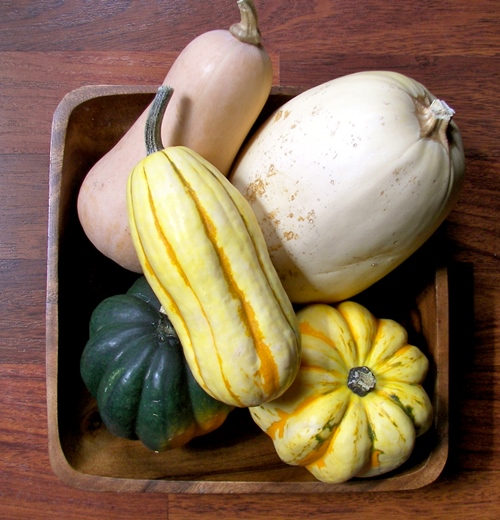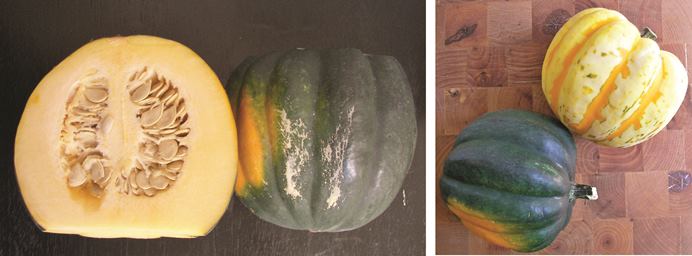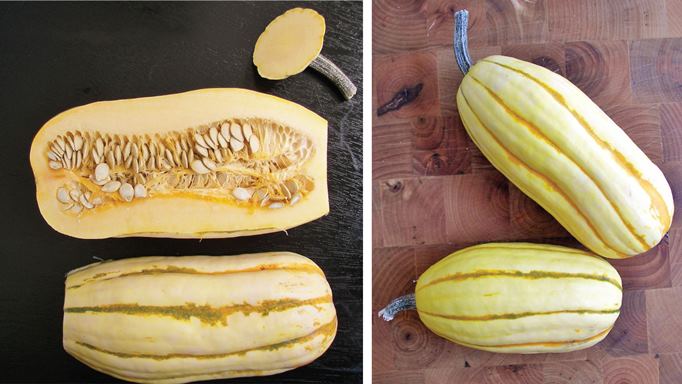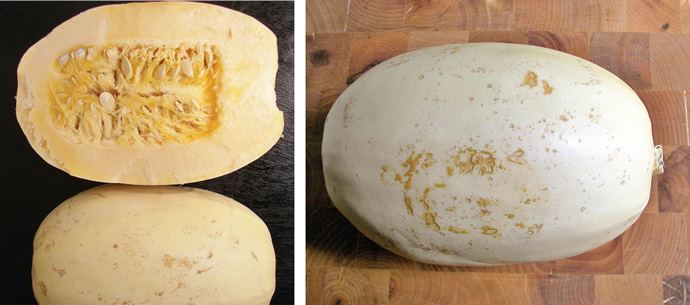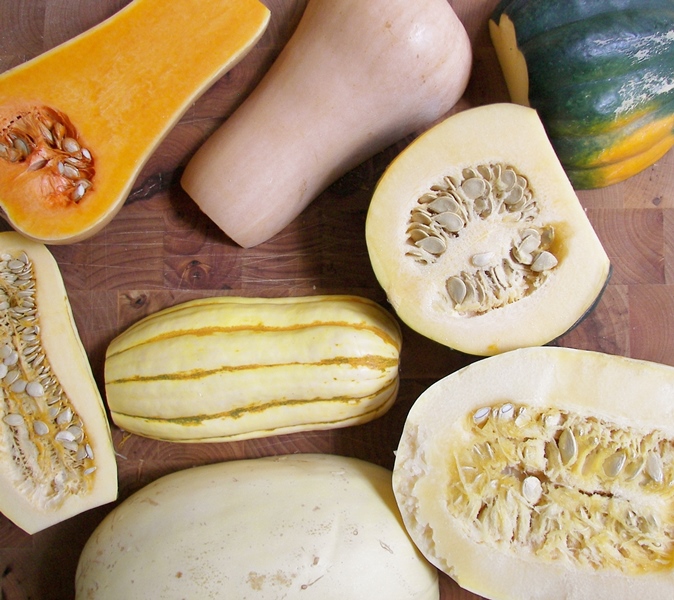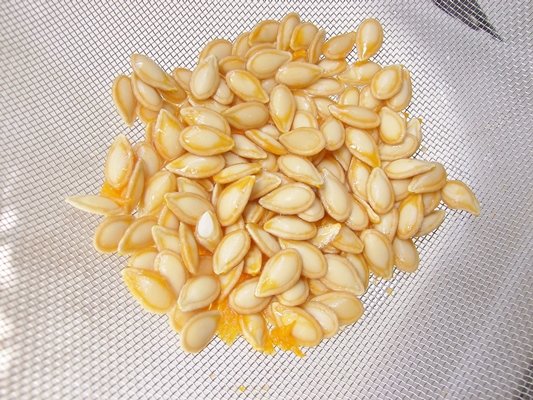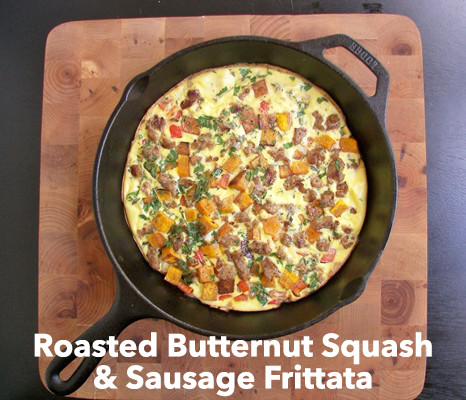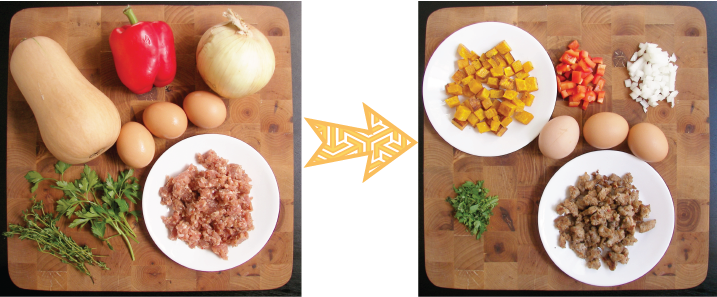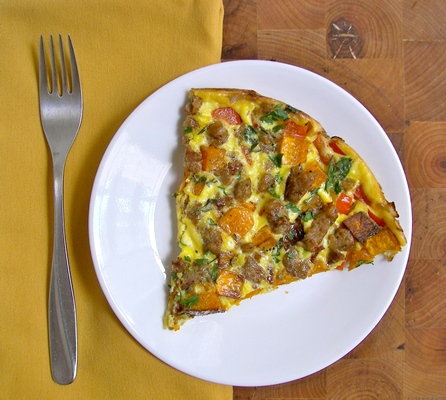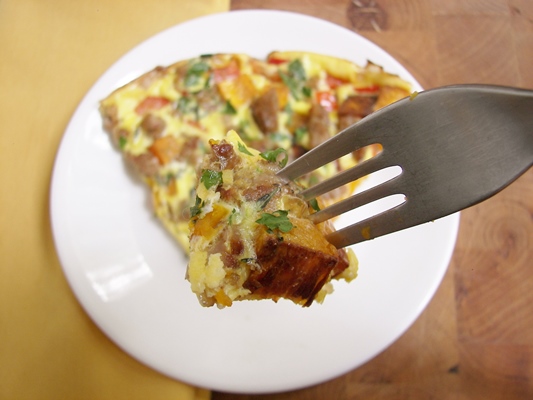September is Fruit and Veggie Month! What better way to celebrate than to learn more about what’s in season right now! Here in North Carolina it’s time for all the winter squash recipes to start floating around again! Winter squash is a great fiber rich, nutrient dense carbohydrate that’s loaded with antioxidants like beta-carotene, lutein, zeaxanthin, and beta-cryptoxanthin. It’s also a good source of Vitamin C, B Vitamins, manganese, potassium, and other nutrients.
Some of us may feel that they aren’t the easiest vegetables to cook with. The tough outer skin can be difficult to cut through sometimes, but I promise they are worth the extra effort! There are over a dozen common varieties of winter squash (kabocha, pumpkin, blue hubbard, etc.), and many more heirloom varieties, here are a few of my favorites.
Butternut Squash
This is one of the most common winter squashes. Its sweet slightly nutty flavor and smooth texture makes it a favorite among many of us. Butternut squash is great roasted, pureed into soups, or even as fries!
Check out these tasty Butternut Squash recipes:
- Butternut Squash and Smoky Black Bean Kale Salad
- Spiced Butternut Squash and Apple Soup (delicious!)
- Sausage and Butternut Squash Frittata (see below)
Acorn Squash
The acorn squash can be forest green, golden or multicolored. It has a much firmer texture and a more savory flavor than the butternut. The acorn squash is great for stuffing since its shape will hold up when baked.
Here are some great acorn squash recipes:
- Roasted Acorn Squash with Chile Vinaigrette
- Acorn Squash Stuffed with Chard and White Beans
- Parmesan Roasted Acorn Squash
Delicata Squash
This might be my favorite winter squash. The rich, sweet yellow flesh is simply delicious! Delicata have a thinner, edible skin, so they don’t store as well as the other winter squashes which means you will typically only see these for a few months in the fall. But that also means they are much easier to work with! My favorite way to cook this winter squash is to simply cut in half, scoop out the seeds and roast it! The roasting caramelizes the natural sugar in the squash. Just add a touch of sea salt and grass-fed butter and it’s out of this world good!
Here are a few more ideas:
- Chipotle Glazed Delicata Squash
- Autumn Harvest Salad with Roasted Squash, Brussels Sprouts and Caramelized Onions (So good! I added some grilled chicken and made it a meal!)
Spaghetti Squash
This pale to bright yellow squash is very different from other winter squashes. It has a pale flesh that when cooked separates into thin strands that resemble spaghetti noodles (hence the name). The mild flavor lends this squash to many possibilities. My favorite is to simply cut it in half, roast it with a little olive oil salt and pepper, shred and top it with a great meaty pasta sauce. You can also cook it in the slow cooker or the microwave. However, roasting gives it the best flavor.
Here are a few other ideas:
How to Prep Winter Squash
For many of us, the most difficult thing about winter squash is the chopping and peeling since the skins are so hard (except for the delicata). The spaghetti squash seems to be the toughest in my opinion.
I find that for the Butternut squash, the easiest way to prep (if you are dicing it) is to cut the long neck from the body with a heavy chef’s knife then peel and dice each section separately with a paring knife. This makes it a little easier to handle. Like in this post. Of course there is more than one way to do anything, so try a few different techniques and see what you like best. You can also purchase already diced fresh butternut squash at several grocery stores now, just look in the produce section.
To tackle spaghetti squash, you can put it in the microwave for 2 minutes to make it a little softer and easier to cut in half.
Luckily, the acorn squash is small enough so it’s fairly easy to handle. I like to cut the stem off first then cut it in half.
Don’t toss the seeds!
The seeds in the winter squashes can be toasted and eaten. The seeds are not only a great source of healthy fats, they also contain fiber and are rich in vitamins and minerals like folate, potassium, calcium and iron. You simply wash them, separating the pulp from the seeds, toss them with a little olive oil and sea salt and roast. There are endless spice combinations that you can add too. You can also try boiling them in salty water before roasting, like in this recipe.
To celebrate Fruit and Veggie Month, I challenge you to visit your local farmers market and try at least one winter squash variety you’ve never had.
Tell us about it in the comments below.
Roasted Butternut Squash and Sausage Frittata
Adapted from Cook Eat Paleo
Makes 2 Servings
A protein rich breakfast seems to be a struggle for many of us. Here is one nutrient dense, protein rich breakfast that’s super easy! This is a very forgiving recipe. You can throw in leftover roasted vegetables from the night before or add some kale or spinach too!
Ingredients
2 teaspoons olive oil
3 ounces cooked sausage, chopped or crumbled
¼ cup onion, diced
¼ cup red bell pepper, diced
½ cup butternut squash, cubed and roasted
3 large eggs
2 teaspoons mixed fresh herbs (or ½ teaspoon dried) ( parsley and thyme)
Sea salt and pepper, to taste
Directions
- Preheat broiler.
- Beat eggs, salt and pepper and herbs until well-combined.
- Add fat to 10-inch oven-proof skillet and sauté onions and peppers until soft. Add sausage and squash and cook until heated through. Pour eggs over filling and cook until edges start to set.
- Put pan in oven and broil until frittata is puffed and eggs are cooked through, 3-5 minutes.
Enjoy!
Nutrition Information per Serving: Calories 261, Fat 15g, Saturated Fat 3.7g, Cholesterol 322mg, Sodium 260mg, Carbohydrates 10.5g, Fiber 1g, Protein 19g
Click here for a printer-friendly version of this recipe.
Click here for a printer-friendly version of this blog post.
